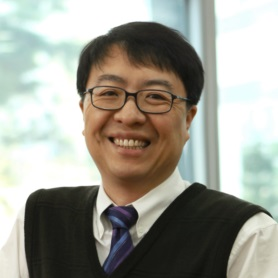Nano Korea 2021
A special issue of Applied Sciences (ISSN 2076-3417). This special issue belongs to the section "Nanotechnology and Applied Nanosciences".
Deadline for manuscript submissions: closed (20 August 2021) | Viewed by 6518
Special Issue Editors
Interests: atomic force microscopy; electrical/electrochemical nanobiosensors; optical nanobiosensors; biochips; BioMEMS and BioNEMS; nanobiomaterials for environments; nanotechnology for bio-robotics; nanotechnology for tissue engineering and regenerative medicine; nanomaterials and nanotechnology in drug and gene delivery; nano-toxicology; sample preparation; molecular diagnostic system; bioanalytical engineering
Special Issues, Collections and Topics in MDPI journals
Interests: synthesis of 2D atomic crystals and their device applications; synthesis of metal oxides and their device physics; electrohydrodynamic lithography; atomic layer deposition
Special Issues, Collections and Topics in MDPI journals
2. Department of Nano-Mechatronics, Korea University of Science and Technology (UST), Daejeon 34113, Republic of Korea
Interests: quantum dots; semiconductors; metals; nanolithography; photolithography; nanoimprint; scanning probe lithography; 3D printing; atomic force microscopy; carbon nanotube; flexible device; stretchable device; nanometrology; ultrafast laser processing; laser scanning microscopy; nanomaterial-based flexible device; maskless digital lithography
Special Issues, Collections and Topics in MDPI journals
Interests: semiconductor logic device; memory device; display device; optoelectronic device; energy conversion; 1D nanomaterials; 2D nanomaterials; semiconductors; graphene; thermoelectrics; energy harvesting; nanolithography; photolithography; nanowire FET; electrical/electrochemical nanobiosensors
* Publication Chair
Special Issues, Collections and Topics in MDPI journals
Interests: nanobiosensor; nano-analysis; nanomaterials; nanomanufacturing
Special Issues, Collections and Topics in MDPI journals
Interests: nanomagnetic materials; spin caloritronics; plasmonic nanostructures; magnetoplasmonics
Special Issues, Collections and Topics in MDPI journals
Special Issue Information
Dear Colleagues,
This Special Issue will publish selected papers from the 19th International Nanotech Symposium & Nano-Convergence Exhibition (NANO KOREA 2021), 7–9 July 2021, KINTEX, Ilsan, Korea.
In particular, the symposium, which is the largest sympoisum on nanoscale science and technology in Korea, will be a meaningful occasion to confirm major research results and up-to-date research trends, increase the exchange among researchers in relevant fields, and materialize the results of research. The NANO KOREA symposium will cover the following main topics:
- Nanoelectronics and photonics;
- Advanced nanomaterials;
- Nanofabrication and measurement;
- Nanobiotechnology and nanomedicine;
- Nanotechnology for energy;
- Safety, standardization, and regulation in nanotechlogy;
- Sensors and actuators;
- Computational nanoscience and technology.
Papers attracting the most interest at the conference, or that provide novel contributions, will be selected for publication in Applied Sciences. These papers will be peer-reviewed for validation of research results, developments, and applications.
You may choose our Joint Special Issue in Micromachines.
Prof. Dr. Junhong Min
Prof. Dr. Dae Joon Kang
Prof. Dr. Won Seok Chang
Prof. Dr. Moongyu Jang
Prof. Dr. Wan Soo Yun
Prof. Dr. Jong-Ryul Jeong
Guest Editors
Manuscript Submission Information
Manuscripts should be submitted online at www.mdpi.com by registering and logging in to this website. Once you are registered, click here to go to the submission form. Manuscripts can be submitted until the deadline. All submissions that pass pre-check are peer-reviewed. Accepted papers will be published continuously in the journal (as soon as accepted) and will be listed together on the special issue website. Research articles, review articles as well as short communications are invited. For planned papers, a title and short abstract (about 100 words) can be sent to the Editorial Office for announcement on this website.
Submitted manuscripts should not have been published previously, nor be under consideration for publication elsewhere (except conference proceedings papers). All manuscripts are thoroughly refereed through a single-blind peer-review process. A guide for authors and other relevant information for submission of manuscripts is available on the Instructions for Authors page. Applied Sciences is an international peer-reviewed open access semimonthly journal published by MDPI.
Please visit the Instructions for Authors page before submitting a manuscript. The Article Processing Charge (APC) for publication in this open access journal is 2400 CHF (Swiss Francs). Submitted papers should be well formatted and use good English. Authors may use MDPI's English editing service prior to publication or during author revisions.






